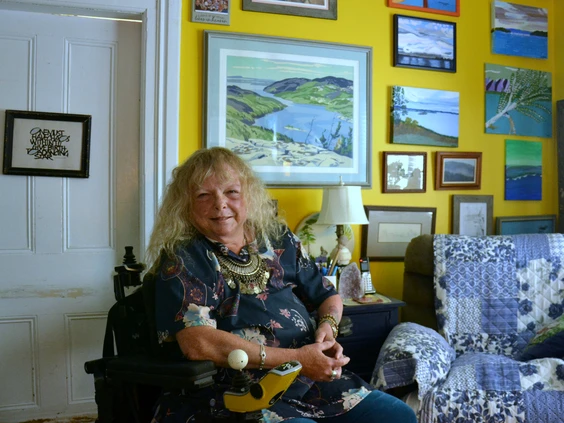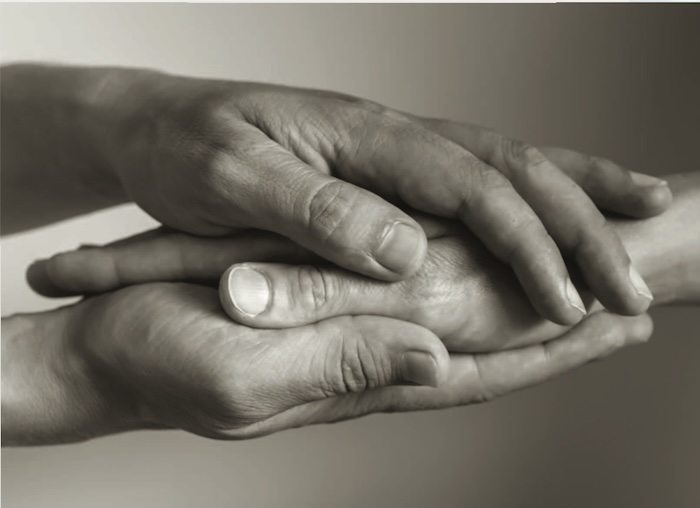– Everyone should

Swedish death cleaning, basically throwing out your crap so that others don’t have to do it when you’re gone, is truly comforting, says Sophie Morris
I have a stash of travel guides that take up two shelves in my home. They’re all completely useless, of course – out of date and pre-smartphone. But while clearing out my house before letting the builders in a few years ago, I struggled to get rid of them. The vintage guidebooks to foreign countries and capitals remind me of the places I’ve been and the life I once had. My youth. Does getting rid of them mean accepting I will never live in Spain?
But when I factor in my daughter, and think about how she’d feel if I left her with a stack of pointless books, saying goodbye becomes much easier. I’d far rather she has some online photo albums of my travels to flick through when I’m gone than break her back lugging books to the tip. We’ve started to feed them to the fire together, reading pages as we go and dreaming about future holidays and real-life experiences that I’d love to share with my family instead of clinging onto bulky possessions.
I have begun, inadvertently, döstädning – Swedish death cleaning. I’m in my 40s and I’m not ill, unless you count my fear of clutter as an ailment. Nor am I a Marie Kondo-obsessed minimalist. I’m happy to have stacks of books and toys around the house, and shoes and coats piling up in the hallway.
Think of döstädning as a gentle, considerate Kondo. It’s an approach to organising your life – which the Swedes apparently have always done as they age – to prepare for death. It has been translated and popularised for the rest of us by the author Margareta Magnusson, whose book The Gentle Art of Swedish Death Cleaning was an international hit, spawning a TV show (out on Peacock earlier this year) and Magnusson’s 2023 follow-up, The Swedish Art of Ageing Well.
What is Swedish death cleaning? “Basically throwing out your crap so that others don’t have to do it when you’re gone,” says Amy Poelher, who produces and narrates the TV show. But it leaves people feeling enriched rather than robbed, which I know more than a few KonMari acolytes felt once the seasons changed and they had only three pairs of pants and one coat to see them through the winter.
Magnusson came to death cleaning after losing her own mother and husband. She realised that having to sort through housefuls of clutter and useless possessions makes the grieving process even harder. When done properly, according to Swedish folklore, döstädning means taking a gap year after you retire to declutter and organise your home and belongings. While cleaning, we’re forced to think about the stuff we own and our attachment to it, which brings with it a natural emotional cleansing.
Perhaps more importantly, the aim is to consider whether these items will hold value for those we leave behind. If not, they are simply a burden. Therefore, as you consider and confront mortality – something British people are notoriously squeamish about – you also enhance the time you have left and let your loved ones know they have been thought about too.
“Death cleaning isn’t the story of death and its slow, ungainly inevitability,” writes Magnusson. “But rather the story of life, your life, the good memories and the bad. The good ones you keep. The bad you expunge. A loved one wishes to inherit nice things from you. Not all things.”
As the children of boomers who, it sometimes seems, remain in possession of most items they’ve acquired during their long years, my husband and I are both hyper alert to not hanging onto stuff. If we’re putting something in the loft, we’ve always paused to ask if it’s for future use, or just because we can’t face sorting through it. Shows about hoarding on TV typically present extreme examples, which are often health and fire risks. But when you look at most people’s homes, hoarding seems to be the norm rather than the exception.
When my great-aunt died in 2019, my parents were left to sort through her house. Luckily, they are both retired, but they spent months driving back and forth to her modest two-bedroom house to sift through her and my great-uncle’s lives well-lived. So when my Dad later sent me a box of my own school reports and certificates (every piece of paper from the age of three to 18!), I realised he was saving me and my sisters a job and was grateful.
Over the past two years, I’ve become much more ruthless and begun conscientiously Swedish death cleaning. Prompted by the travel guide saga in 2021, I began to see the incredible volume of unused, unloved and, often, useless stuff a family of three in a modest semi was holding on to. We went through the döstädning process then, when we moved out for renovation works to begin, and we did it again when we moved back in a few months’ later.
Most weekends since have involved trips to charity shops, posting items for sale on Facebook Marketplace, eBay, Vinted or local resale WhatsApp groups, or seeking out younger children who might benefit from our daughter’s old clothes and books. Everyone else is at it, too. My – exceedingly lucky – seven-year-old has recently received Jill Murphy’s Worst Witch series, a whole stack of Pamela Butchart books and a complete winter wardrobe, all for free, from our kind neighbours.
One particular sticking point for me has been books. My collection feels a bit like a sourdough starter: alive, always growing, demanding to be fed, prone to surprises and unmanageable. I have made the (extremely conservative) estimate that a minimum of 20 new books enter the house for me each year for work and pleasure. Therefore, I must identify and pass on at least 20. This is not easy, but I plough on, making slow but steady progress. (Don’t worry, I’m not turning them all into fuel. They’re going to keen readers and charity shops.)
Another area of my life where I think about döstädning, and I think this is the most important one, is when I am buying something. If it never gets into my house in the first place, I won’t have to waste time wondering how to get rid of it.
So what have I got from all this death cleaning? I’ve found plenty of comfort in Scandinavian lifestyle trends in recent years: I was a shoo-in for hygge, the Danish concept of building yourself a cosy and comfortable lifestyle, and was born to embrace fika, the Swedish concept of taking time each day to relax and connect over coffee and a cinnamon bun. But death cleaning feels so much more significant and truly comforting, compared to cosiness and cake.
How to Swedish death clean
- If you are genuinely preparing for death because of illness, or feel old enough, it can be wise to tell loved ones that you are Swedish death cleaning. It’s not meant to be bleak, but an act of kindness created with survivors in mind.
- Work top to bottom – from your loft down to your everyday living spaces
- Don’t force people to take items they do not want to save your own guilt. This is a chance for open and honest dialogue about what family members might want now and when you are no longer here.
- Leave sentimental items, letters and photos till last. Keep your own memory box. This is also your chance to dispose of or hide anything embarrassing!
Complete Article ↪HERE↩!






